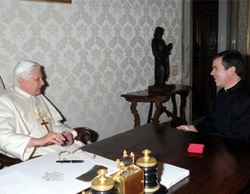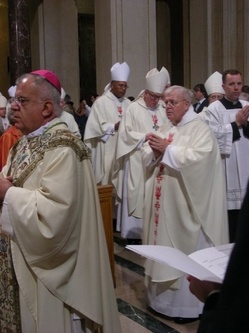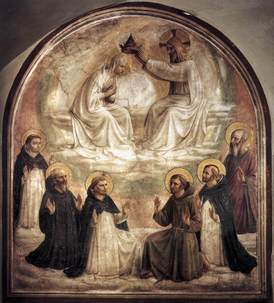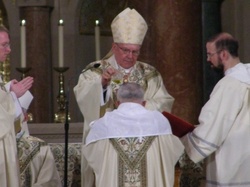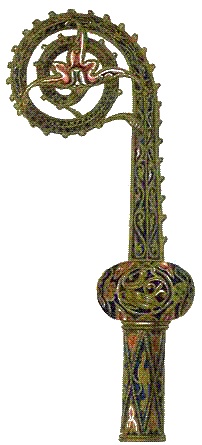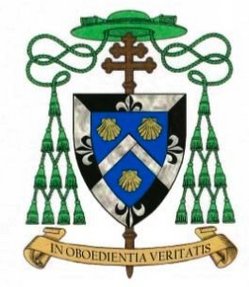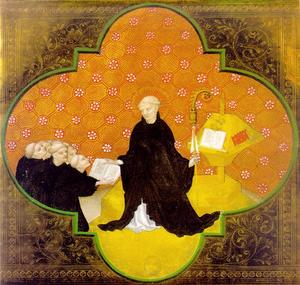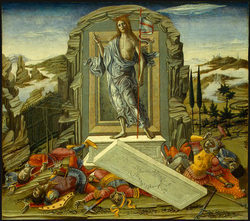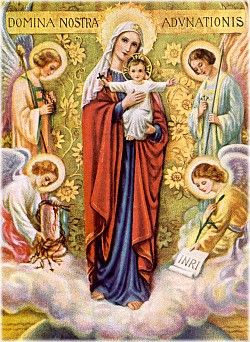How is Caritatis in Veritate (CV; Truth in Charity) binding on the
consciences of Catholics or anyone else? CV is a teaching document that is
addressed to clergy and all people of good will. If you want to talk about it
binding a person’s faith and reason it comes only in the willingness to accept the pope’s vision of life expressed in this teaching. Its ability to influence the reader lies in how receptive the reader is to that which is presented in love.
therefore not in the realm of being an infallible teaching. It is not an infallible teaching for one reason: encyclicals by nature do not define dogma, that is faith and morals, but it may explain in contemporary terms what the Church believes and teaches about a piece of dogma. Encyclicals like this one which deals with the social teaching of the Church and therefore integrates faith and morals developing new data. New information requires a contemporary application. That which is taught in CV does not bear directly on salvation. Furthermore for a teaching to be infallible a pope has to include in the teaching the threefold formula of “we pronounce, declare and define.” Ultimately, we see that CV is signed by the
pope himself therefore it is an official papal document and official teaching but not on the level of dogma.
a bit difficult, that is dense. There are few things to remember at CV: it’s a
committee document, it’s lengthy (about 30K words), and it has theological
depth. Further and most important, CV has what some will call a theological
tour de force because it’s a “classic Ratzinger theology” because you see his insistence
on the integration of faith and reason.
humanity particularly moral and doctrinal; its mission to man’s dignity
and vocation. In Benedict’s own words we hear the echo of what has always been believed, that “The Church does not have technical solutions to present but, as an expert
in humanity, she offers to everyone the teaching of the sacred Scripture on the
truth about man and proclaims the Gospel of Love and justice.” In another
place the pope also said that “The solutions to the current problems of
humanity cannot be merely technical, but must take account of all the needs of
the person, who is endowed with soul and body, and must thus take the Creator,
God, into consideration.”
progressio and the Pope recognizes today’s situation is
different and therefore adapts the church’s approach to social matters. This encyclical a work of continuity in Church teaching. That is to say, Pope Benedict is taking his lead from the continuous teaching of the Church and therefore awakens our attention to a clearer sense of responsibility for shaping the 21st century according to the virtue of peace born of truth and justice. Consistently through the years the Church demands from us a heightened consciousness of our own freedom particularly a freedom wrought by Jesus Christ by indicating the scandals of injustice that exist when man and woman are blinded by sin.
Pope Benedict links man’s religious and human freedom with life issues. If you have to think about
a subtext, CV is a synthesis of the whole of theology. In this encyclical we
see the notion that human dignity is anchored in truth; man and woman has to be
at the center of every decision. As Pope John Paul II said in Centesimus
annus, man is mankind’s greatest asset. Speaking of the
Church’s interest in humanity, John Paul said:
care and responsibility for man, who has been entrusted to her by Christ
himself: for this man, whom, as the Second Vatican Council recalls, is the only
creature on earth which God willed for its own sake, and for which God has his
plan, that is, a share in eternal salvation. We are not dealing here with man
in the “abstract”, but with the real, “concrete”,
“historical” man. We are dealing with each individual, since each one
is included in the mystery of Redemption, and through this mystery Christ has
united himself with each one for ever. It follows that the Church cannot
abandon man, and that “this man is the primary route that the Church must
travel in fulfilling her mission … the way traced out by Christ himself, the
way that leads invariably through the mystery of the Incarnation and the
Redemption.”
the divine. But also, Catholics will come to see in CV that Pope Benedict believes in a companionship that is essential if we are to really thrive as a people with a common destiny; our job is to be mindful that there is truth in genuine friendship (cf. the other encyclicals of the pope). I think as we progress in this millennium we have to
regularly consider with faith and reason who man is according to method of faith and reason viz. what those who are
constructing a globalized sense of society say man is or is not. In other words, whose understanding of humanity is more reasonable, more loving and more life-giving? The Church’s or Citigroup’s? Increasingly
we hear how bad the world has been or is becoming and little on how a true
Christian responds to such anxieties. Sadly, many homilies we hear the priest or
deacon speak more of a reduction of man’s faith and the radical nihilism man
faces than salvation history wrought by Jesus Christ. CV opens the doors for us to live as God wants us to live by reminding us that the truth in freedom lies in the adherence to God’s discoverable plan.

